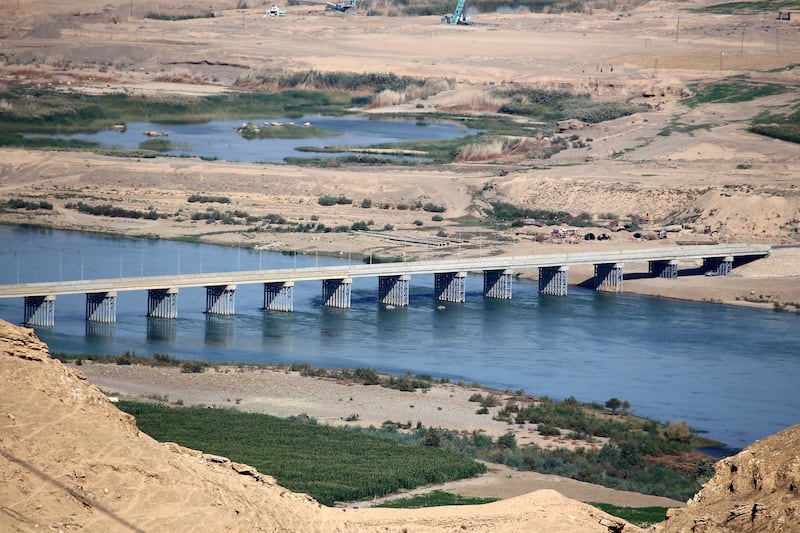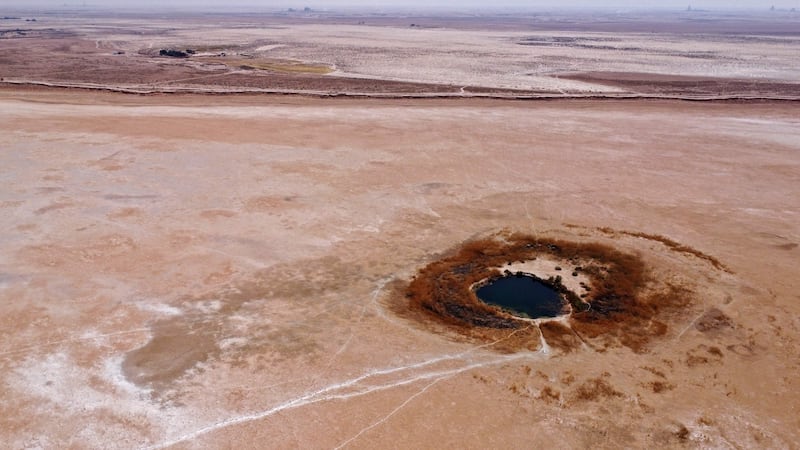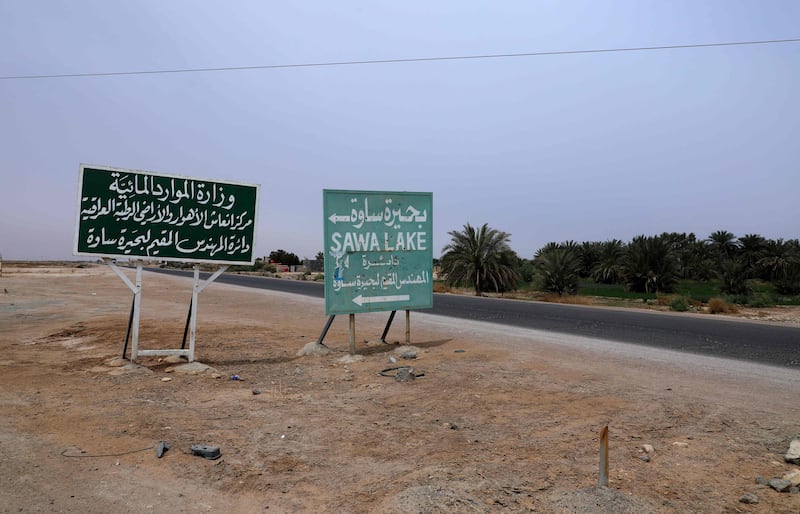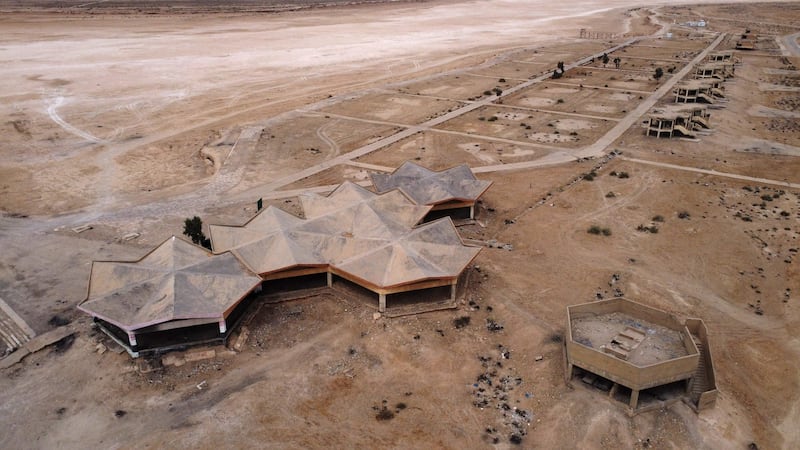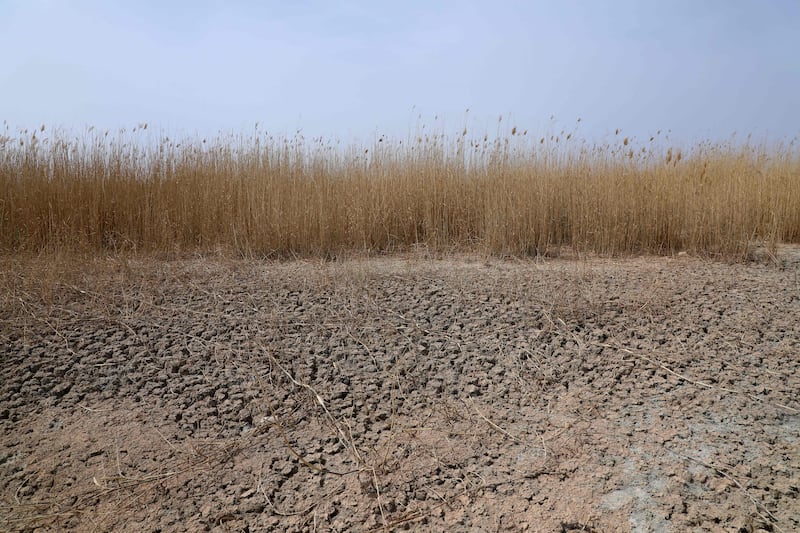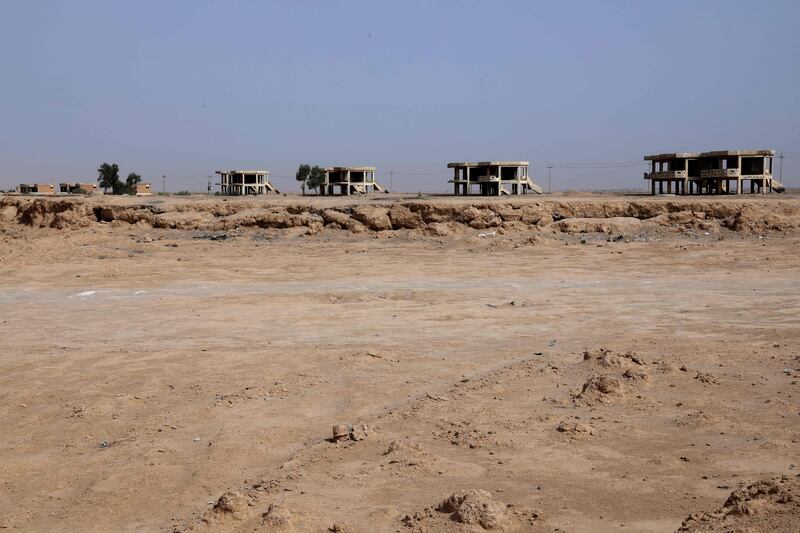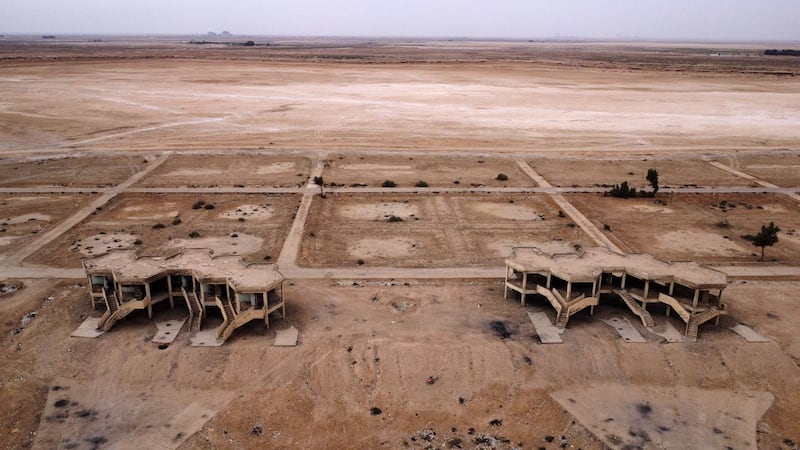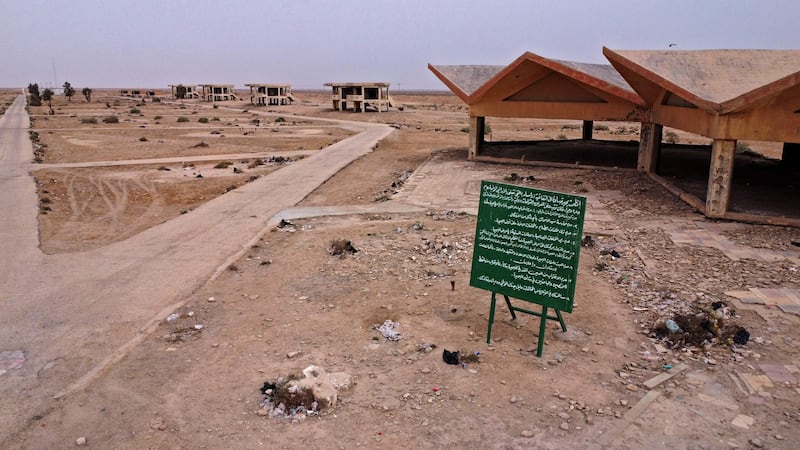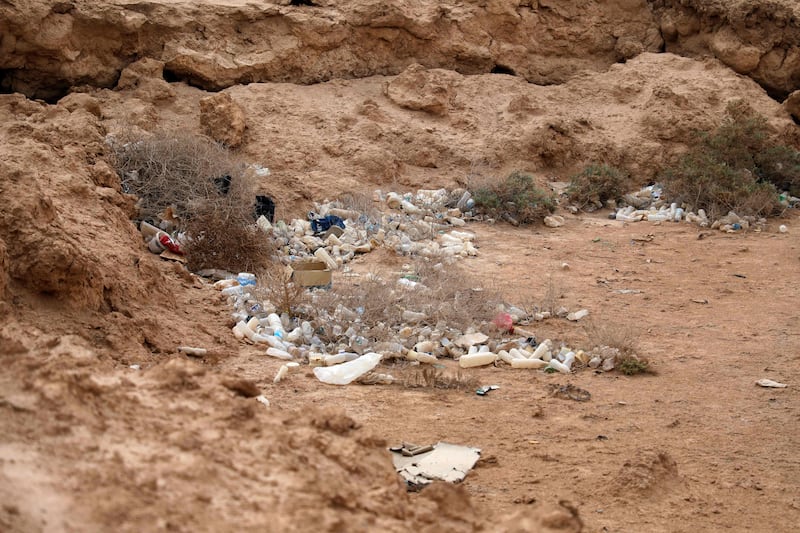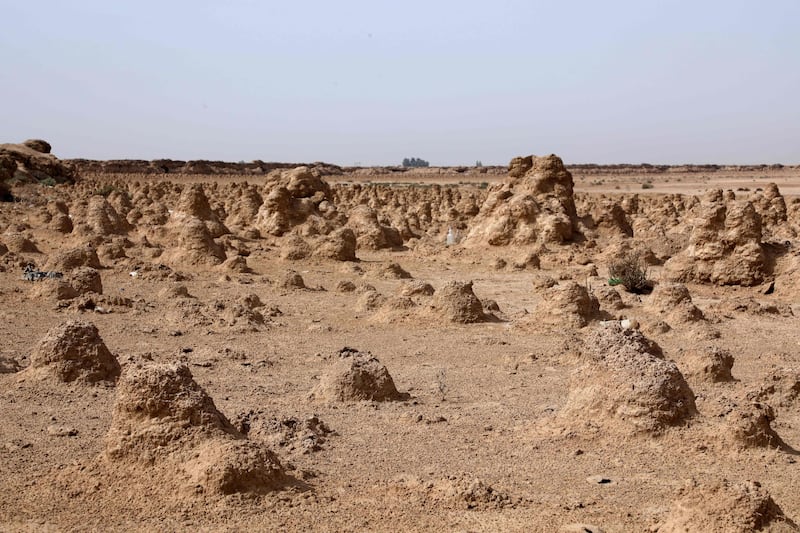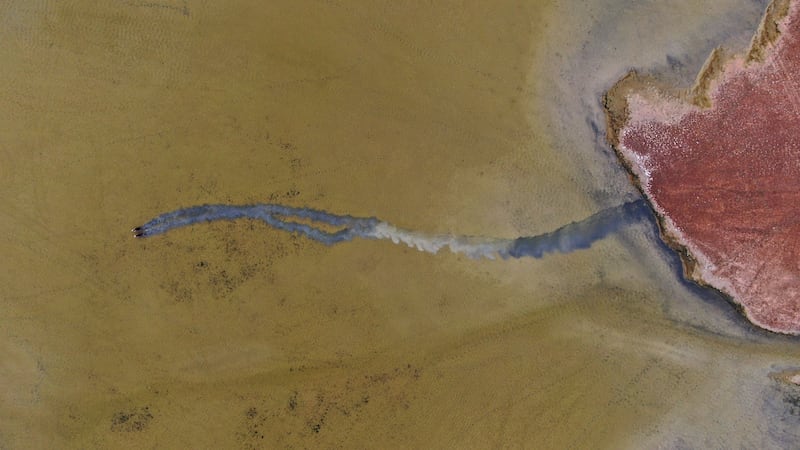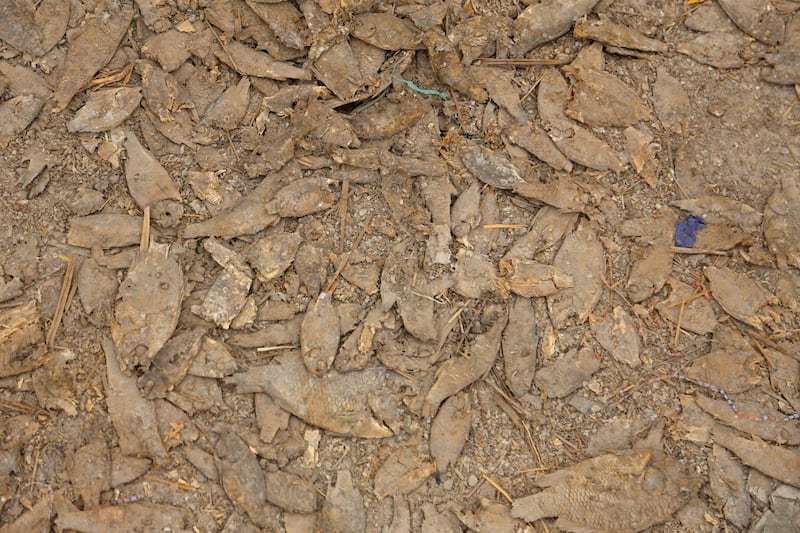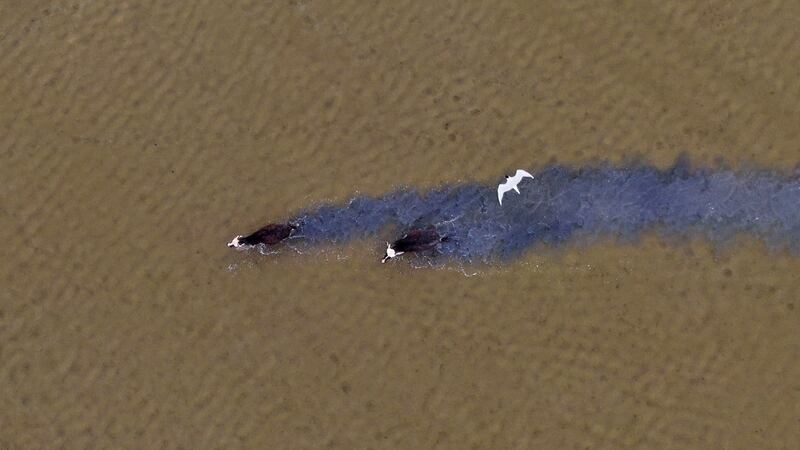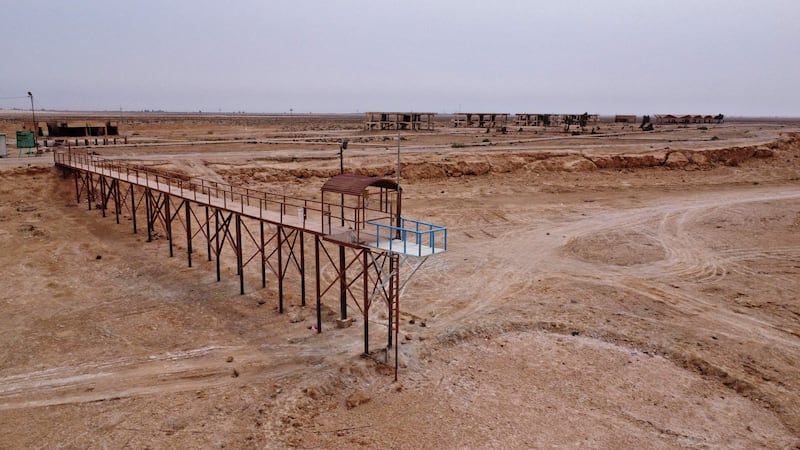An Iraqi government official has painted a grim picture of environmental degradation in the country due to climate change, and called for swift action.
“Climate change is real,” Deputy Environment Minister Jassim Al Falahi told a gathering of international experts, academics and policymakers attending the two-day Sulaimani Forum on Thursday.
“When we talk about drought today, we consider it a serious challenge linked to our national security.”
Iraq's rivers, which account for more than 90 per cent of its freshwater reserves, currently receive less than 30 per cent of their normal flow from Turkey and Iran, Mr Al Falahi said.
“The main reason for the drought is the policy of the upstream countries and climate change, [which] have led to huge land degradation,” he said.
The country is losing about 400 square kilometres of arable land every year and this has affected the lives of about a third of its population employed in the agriculture sector.
Policymakers have been accused of ignoring the threat.
About a fifth of the water in rivers is lost to evaporation, due to high temperatures, while 30 per cent more is lost as a result of outdated agricultural and irrigation methods, he said.
Mr Al Falahi said the drought would be “one of the main sources” of unrest and social, health, economic, political and security crises if it continues and authorities fail to adopt measures to mitigate it.
The most affected provinces are the southern regions of Thi Qar, Mayssan, Basra and Muthana, he said.
In ancient times, Iraq was known as Mesopotamia, or the Land Between the Two Rivers.
Its extensive alluvial plains gave rise to some of the world's earliest civilisations: Sumerian, Akkadian, Babylonian and Assyrian.
The civilisation of Ancient Mesopotamia thrived along the banks of the great two rivers, the Euphrates and the Tigris, in the middle of a vast desert.
In the last few centuries, Iraqis have relied on these rivers for water to drink and irrigate crops, with the waterways acting as major transport routes.
But now, the picture is dire, with Iraq ranked by the UN as the fifth-most vulnerable country to climate change.
It is reeling under its worst drought in decades, with temperatures above 50°C last summer, and sandstorms a frequent occurrence.
The two rivers are drying up as a result of dams built upstream in Turkey and Iran, and poor water management. Many of Iraq’s lakes have shrunk in size.
Desertification affects 39 per cent of the country, with 54 per cent of its agricultural land now degraded, mainly due to high soil salinity.
Water quality
Another major concern is the pollution of rivers, due to different human activities.
“Millions of different types of pollutants are being [discharged] into the rivers every day,” Mr Al Falahi said, with state-run institutions, especially municipalities and the Health Ministry, accounting for 95 per cent of the waste.
Iraq has set a goal to stop this practice by 2030, he said, without elaborating.
Environmental activist Jassim Al Asadi, the founder and managing director of the Nature Iraq NGO, criticised the government for not doing enough — especially where marshlands are concerned.
It took him 13 years to convince officials at the Water Resources Ministry to set up a treatment plant for waste in one section of the marshlands.
Endangered marshes
During the 1970s, water covered about 9,650 square kilometres of land and this would increase to 20,000 square kilometres due to floods in times of heavy rain, he said.
The abundance of water was a natural solution as pollutants were diluted, while salinity was low at 200mg per litre of total dissolved solids.
Since then, Iraq's marshes suffered significantly as huge sections were designated for agriculture and oil exploration, apart from the damage caused by decades of war.
However, by 2005, the marshes had improved to about 40 per cent of their original size and Iraq aimed to recover 5,560 square kilometres of the land that had dried up during Saddam's reign.
But as the country experienced severe water shortages last summer, water covered less than 8 per cent of the 2005 target area.
The marshes, which were declared a Unesco World Heritage Site in 2016 for their biodiversity and ancient history, are also affected by high salinity.
The water at the nearest point in the Euphrates contains more than 2,800 mg per litre of total dissolved solids.
Some parts of the marshes could exceed 28,000 mg per litre, slightly less than the 33,000 mg per litre recorded at sea.
The acceptable level for rivers is between 2,400 and 2,600 mg per litre.
As a result, thousands of the country's inhabitants left for nearby cities after losing between 23 per cent and 33 per cent of their buffalo herds and selling more than 60 per cent of them for a low price.
“Today, the marshland water is stagnant,” Mr Al Asadi told the forum, which was organised by the Institute of Regional and International Studies at the American University of Iraq in the city of Sulaymaniyah.
“Day after day, we are finding it hard to feed the Iraqi marshlands with proper water,” he said. “We have to reconsider the existing water and agricultures strategies and to adopt new ones.”
